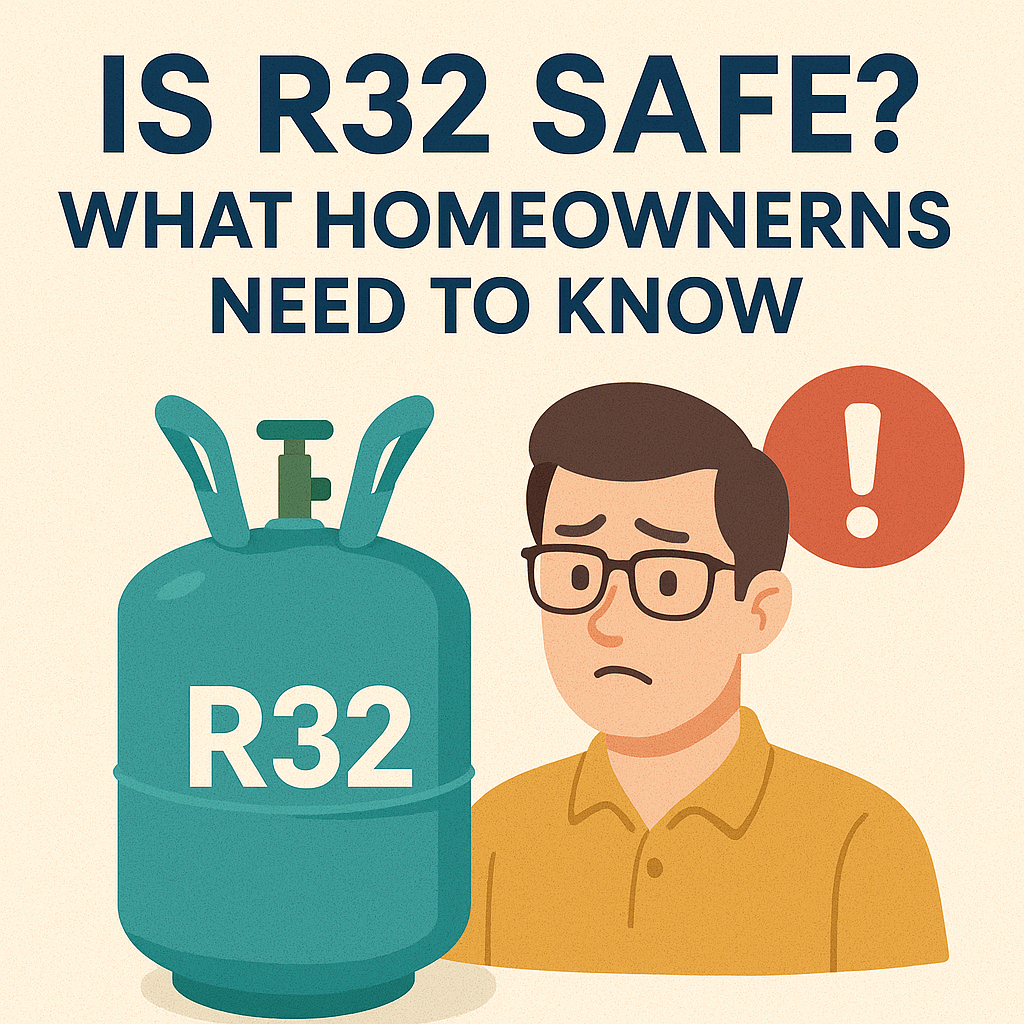🧪 1. What Is R32’s Safety Classification?
R32 is classified as A2L under ASHRAE Standard 34, which breaks down like this:
-
A = Low toxicity
-
2L = Mild flammability (L = “lower burning velocity”)
So compared to other gases:
-
R32 is safer than propane (A3)
-
It’s more flammable than R410A (A1), but with much lower combustion energy
📚 Reference:
“It’s not ‘flammable’ like gasoline. You’d need the right air mix, a strong spark, and a confined space. In normal conditions, R32 is stable and safe.”
🛠️ 2. What Does That Mean for Homeowners?
You don’t need to worry about handling refrigerant unless you’re a tech — and even then, the risks are minor with the right tools and procedures.
If you’re hiring a licensed HVAC installer:
-
They already use R32-compliant tools and leak detectors
-
They follow R32 charging/recovery protocols
-
Systems are built with leak detection and ventilation in mind
📚 Reference:
“Most new R32 systems are designed to reduce leak risk at the source — it’s safer than topping off your lawnmower gas.”
🧯 3. What About Fire Risk?
Technically, R32 can burn. But the burning velocity is less than 10 cm/sec, meaning it’s extremely hard to ignite.
Real-world test data shows:
-
No sustained ignition in open air leaks
-
No flashback from flame sources in field conditions
-
Units are engineered with safety valves, spacing clearances, and pressure protections
📚 Reference:
-
Australian Department of the Environment: R32 Flammability Study
-
Japan Refrigeration and Air Conditioning Industry Association (JRAIA) Flammability Facts
“R32 units are running safely in millions of homes across Japan, Europe, and Australia — with virtually no incidents.”
🔧 4. Installation and Building Code Compliance
In the U.S., the use of R32 in residential split systems is approved under the EPA SNAP program and follows building safety codes like:
-
UL 60335-2-40 (for flammable refrigerants)
-
IMC and IRC 2024 updates for A2L-rated refrigerants
-
Many state and local authorities have adopted A2L handling regulations
That means licensed contractors are fully trained and certified to install R32 units legally and safely.
📚 Reference:
“When installed to code, R32 is no more dangerous than your natural gas line. It’s all about doing it right.”
✅ Bottom Line: R32 Is Safe — When Used as Designed
| Safety Factor | R32 (A2L) |
|---|---|
| Toxicity | Low |
| Flammability | Mild (non-sustaining flame) |
| Handling Risk | Low with trained professionals |
| System Safety Design | High (vented, pressurized, sealed) |
| Real-World Use | Millions of global installs |
You can confidently install an R32 system — just make sure:
-
It’s installed by a licensed HVAC pro
-
You don’t mix refrigerants (never retrofit R410A systems)
-
You follow your local code and permit rules
“You’re more likely to trip over your garden hose than have a problem with R32 — especially when it’s installed right.”
👇 Shop Safe, Efficient Systems
Looking for high-performance, future-ready air conditioners? R32 systems from The Furnace Outlet meet all the latest safety and environmental standards.
In the next topic we will read about: R32-Compatible Systems: What to Look for in a Match







